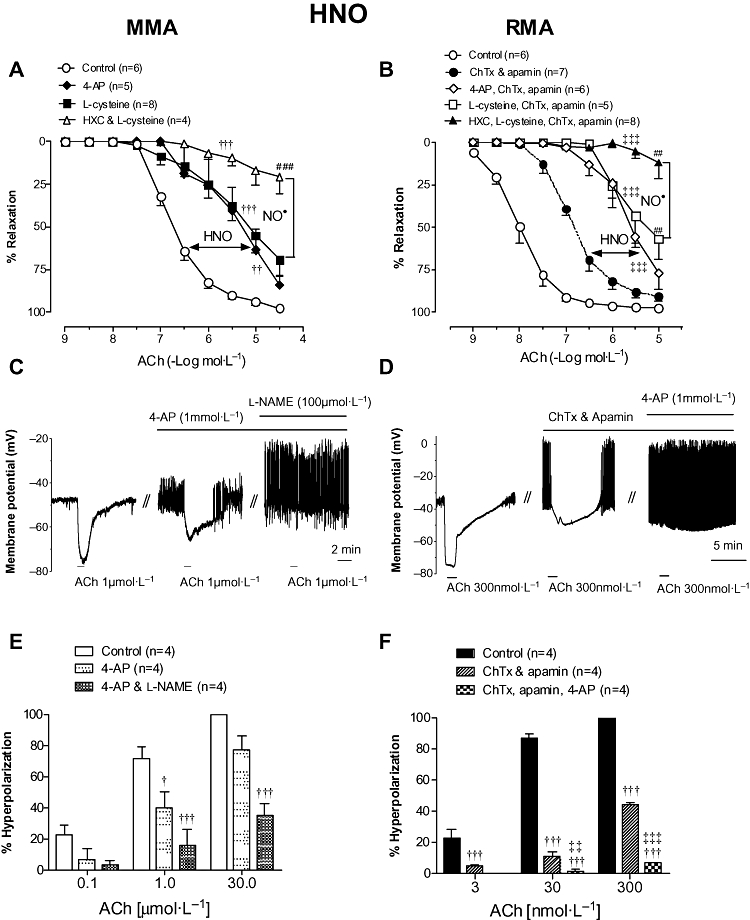Figure 3.

Vasorelaxation responses to ACh in either (A) MMA in the absence (Control) or presence of 4-AP (1 mmol·L−1), l-cysteine (3 mmol·L−1) and l-cysteine & HXC (100 µmol·L−1) in combination, or (B) RMA in the absence (Control; reproduced from Figure 1B for comparison) or presence of ChTx (100 nmol·L−1) & apamin (100 nmol·L−1) alone (reproduced from Figure 1B for comparison), or combined with 4-AP (1 mmol·L−1), l-cysteine (3 mmol·L−1) or l-cysteine & HXC (100 µmol·L−1). Smooth muscle membrane potential recordings illustrating ACh-evoked hyperpolarization in MMA (C) and RMA (D) following depolarization with cirazoline. Hyperpolarizations were recorded in the absence and presence of 4-AP alone (C, E) or combined with l-NAME (C, E); or ChTx and apamin alone (D, F) or combined with 4-AP (D, F). In (C) and (D) // indicates a break in a continuous recording made in the same cell. Indomethacin (10 µmol·L−1) was present throughout. Values are expressed as (A, B) % reversal of contraction or (E, F) % of maximal control hyperpolarization and given as mean ± SEM, where n = number of animals. †P < 0.05, ††P < 0.01, †††P < 0.001 versus untreated control (two-way anova), ‡‡P < 0.01, ‡‡‡P < 0.001 versus ChTx & apamin treatment (two-way anova), ##P < 0.01, ###P < 0.001, for response at 10 µmol·L−1 or 30 µmol·L−1 versus untreated control (one-way anova). 4-AP, 4-aminopyridine; ACh, acetylcholine; ChTx, charybdotoxin; HNO, nitroxyl; HXC, hydroxocobalamin; l-NAME, Nω-Nitro-L-arginine methyl ester; MMA, mouse mesenteric arteries; NO, nitric oxide; RMA, rat mesenteric arteries.
